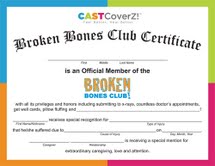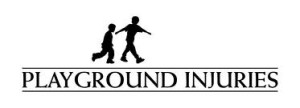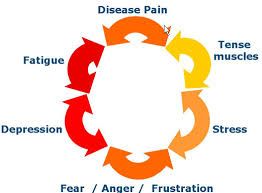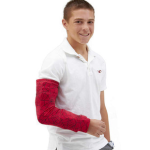 Having a broken bone or injury during Halloween can be frustrating. Just because you are casted or booted doesn’t mean you have to miss out on all the costume fun. You can conceal or cover that cast!
Having a broken bone or injury during Halloween can be frustrating. Just because you are casted or booted doesn’t mean you have to miss out on all the costume fun. You can conceal or cover that cast!
With Halloween just around the corner, make sure you start planning now, before the great pumpkin arrives. Your cast or crutches can make it difficult to go trick-or-treating. This is the time to clear the cobwebs and get creative with your costume ideas for this bewitching night. We’ve come up with some fun and clever cast cover Halloween costume ideas for kids, children and adults. For tips on safe trick-or-treating on crutches, please read our guest post by Goodbye Crutches, “Halloween Safety Tips While On Crutches.”
Wicked Webs, as shown above in our arm brace cover product, Tubez!, is available for casts and to cover walking boots, too! This brace, boot or cast cover would go perfect with any creepy costume. If you’re looking for something more scary, “Dark Skulls” is the fabric for you! For girls of any age that want to embrace their meow, we have fun animal prints, like “You Wild Thing” and “Wild Style” in slings. We also have several flower prints that would look great if you’re looking to dress up like a 1960’s flower child or go-go dancer.
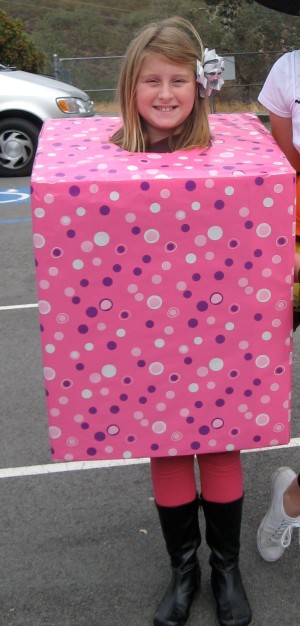
For those that want to be really creative with their cast, brace, boot or sling, try these: Wearing a walking boot? Play it up and be Frankenstein! Sporting a sling? Mummify your body! One of our favorite costume concealed idea hides an arm cast and sling cleverly. See the adorable picture of one of our customers, right. Get a large box and cover it in your favorite wrapping paper. Cut holes out for legs and one arm (gotta’ hold the treat bag!) and neck/head. Tape a bow on your head and voila…you’re a present! BONUS: This costume idea cost less than $10.00!
CastCoverz! fashionable cast covers and orthopedic accessories are an exciting way to get creative this Halloween. Our fashionable AND functional cast covers are available in both children and adult sizes, male or female. We also have custom cast covers, so you can cover your cast creatively to match just about any costume!
Please share photos of your Halloween costumes with us on our CastCoverz! Facebook page. The best costume that conceals or reveals a cast, boot or brace will receive a FREE “Member of Broken Bones Club” t-shirt , a featured picture and lots of media shout-out!
For a limited time, all Halloween inspired fabrics are 10% off. Don’t be scared that time is slipping away. CastCoverz! always offers same day shipping for standard orders received before 2:00 PST.
Have fun and be safe!

